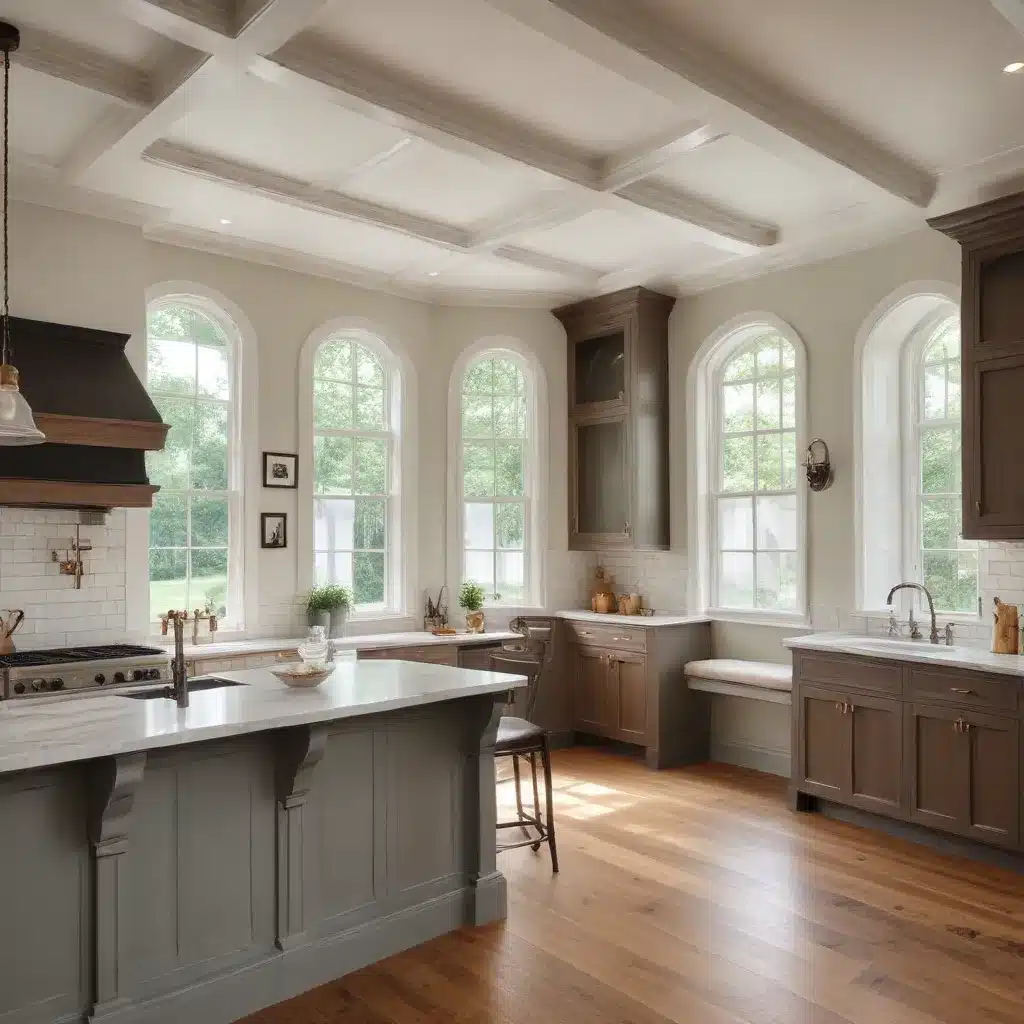
Older homes possess an irresistible allure, captivating us with their timeless architectural details and echoes of bygone eras. As experienced home improvement consultants, we understand the unique joys and challenges of renovating these historic treasures. Striking the right balance between preserving the past and embracing the present is the hallmark of a successful historic home remodel.
The Significance of Historic Architecture
Historic homes are not just physical structures; they are repositories of cultural heritage, embodying the stories and styles of the eras that shaped them. From the intricate moldings of a Victorian-era mansion to the sturdy timber framing of a New England farmhouse, each architectural element tells a tale of the craftsmen and visionaries who brought these homes to life.
Preserving Cultural Heritage: Renovating a historic home means preserving a piece of the past for future generations. By respecting the original design, materials, and techniques used in construction, we honor the legacies of the communities that once inhabited these spaces. This stewardship ensures that the rich architectural tapestry of our neighborhoods and cities continues to be celebrated and appreciated.
Architectural Styles and Eras: Understanding the specific architectural style and era of a historic home is crucial in guiding the renovation process. Whether you’re working with the grand symmetry of a Georgian manor or the whimsical asymmetry of a Craftsman bungalow, each style demands a tailored approach to ensure the preservation of its distinctive character.
Historic Preservation Principles: At the heart of historic home renovation lies the fundamental principle of preservation. This approach prioritizes the retention and restoration of original features, employing time-honored techniques and materials to maintain the integrity of the structure. By adhering to these principles, we can breathe new life into historic homes while honoring their enduring significance.
Balancing Past and Present
The true art of historic home renovation lies in the delicate balance between preserving the past and accommodating the needs of the present. It’s a dance of integrating modern conveniences and comforts while respecting the original design and character of the property.
Integrating Modern Amenities: Historic homes often lack the functionality and efficiency of their contemporary counterparts. Updating electrical systems, plumbing, and HVAC can transform a historic home into a comfortable, energy-efficient haven without compromising its historic charm.
Respecting Original Design Elements: The preservation of original architectural features, such as intricate moldings, hand-crafted doors, and period-specific windows, is paramount in maintaining the home’s historical integrity. Skilled craftspeople can often repair or replicate these elements, ensuring a seamless blend of old and new.
Innovative Approaches to Remodeling: Historic home renovation requires creative problem-solving to marry modern necessities with historical aesthetics. Thoughtful design strategies, such as strategic additions, reconfigured floor plans, and the integration of sustainable technologies, can enhance livability while preserving the home’s distinctive character.
Remodeling Strategies
Embarking on a historic home renovation project requires a methodical approach that balances preservation, functionality, and personal style. By carefully assessing the property, designing with sensitivity, and employing skilled construction techniques, homeowners can unlock the full potential of their historic treasures.
Assessing the Property: Before diving into the renovation process, it’s essential to thoroughly evaluate the historical significance and condition of the home. This involves researching the property’s architectural history, identifying unique features, and conducting a comprehensive assessment of the structure’s current state.
Designing with Sensitivity: When conceptualizing the remodel, prioritizing preservation is paramount. Designers and architects well-versed in historic preservation principles can craft solutions that seamlessly integrate modern amenities and spatial requirements while respecting the original design aesthetic.
Construction and Restoration: Executing a historic home renovation demands a level of craftsmanship that goes beyond standard residential remodeling. Skilled tradespeople, such as master carpenters, stonemasons, and plaster artisans, are essential in executing meticulous restorations and ensuring that new additions harmonize with the existing structure.
Regulatory Considerations
Historic home renovations often navigate a complex web of guidelines and regulations, and understanding these parameters is crucial for a successful project.
Historic District Guidelines: Many historic homes are situated within designated districts, subject to specific zoning laws and preservation guidelines. Working closely with local authorities and historic preservation commissions is necessary to ensure that all renovations comply with these regulations and maintain the character of the neighborhood.
Funding and Incentives: Fortunately, there are various funding sources and incentives available to homeowners undertaking historic home renovations. From historic preservation grants to tax credits and rebates, these resources can help offset the often-significant costs associated with restoring and upgrading older properties.
Enhancing Livability
While preserving the past is essential, a historic home must also adapt to the needs and lifestyles of its current occupants. Striking the right balance between honoring the home’s heritage and creating a comfortable, functional living environment is the hallmark of a well-executed remodel.
Functional Improvements: Upgrading aging infrastructure, such as electrical, plumbing, and HVAC systems, can dramatically improve the livability of a historic home. Additionally, optimizing space utilization and ensuring accessibility can transform a historic property into a modern, comfortable living space.
Lifestyle Integration: Blending the historic charm of a home with the conveniences of contemporary living is an art form. Careful design choices, such as harmonious color palettes, period-appropriate furnishings, and the integration of smart home technologies, can create a seamless transition between the past and the present.
Promoting Sustainable Practices: Historic home renovations present an opportunity to embrace sustainable design strategies. From energy-efficient upgrades to the use of eco-friendly materials, homeowners can preserve the past while shaping a more sustainable future for their historic treasures.
Breathing new life into a historic home is a captivating journey that requires a delicate balance of preservation, innovation, and personal style. By honoring the architectural legacy of the past and seamlessly integrating modern comforts and conveniences, homeowners can transform their historic properties into vibrant, functional living spaces that will be cherished for generations to come. To learn more about historic home renovation and other remodeling strategies, visit Reluctant Renovator.



